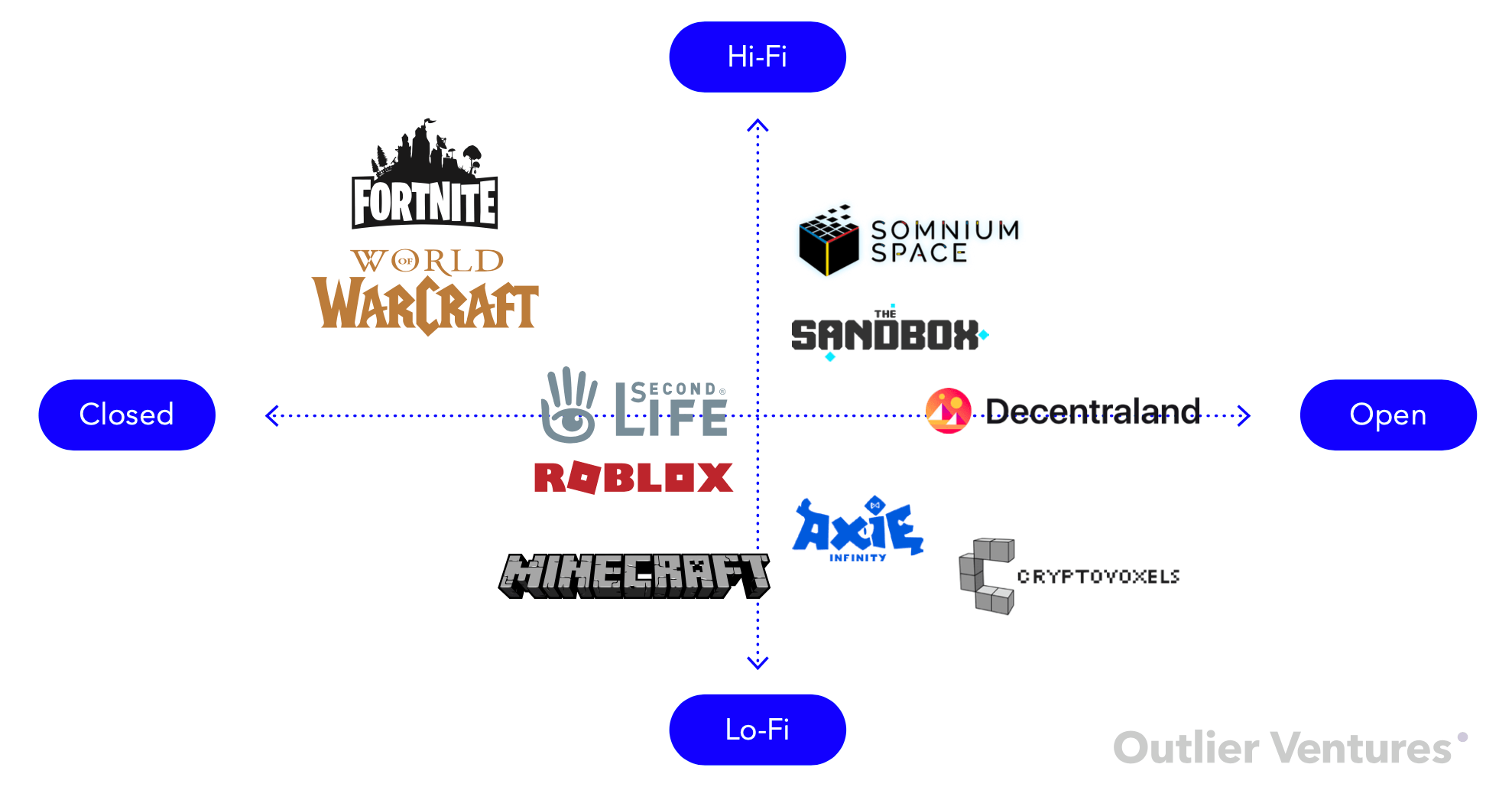It is true there are competing visions for the Metaverse and it is not yet clear if they can and will co-exist or must be in competition. To put it simply there are at least two versions of the Metaverse we observe emerging: one dominated by closed platforms and Big Tech like Facebook / Oculus and the other built on open protocols leveraging blockchains like Decentraland.
But the distinction of open and closed isn’t just limited to technology choices and the extent to which platforms embrace open source principles with their code and data but importantly whether they have a closed economy, within or across their own proprietary games, or whether they allow transferability of value outside their ecosystem, how that interacts with fiat based systems and to what extent they do or don’t control the monetary and fiscal policy of the underlying economy itself.
Furthermore, there is also another technical and philosophical distinction between visions and emergent actualities of metaverses which could be described as: low-fi to hi-fi. There are platforms that deliberately push the technical boundaries of the experience through both software and the hardware requirements like Oculus and those that design for the lowest possible device and bandwidth requirements for universal accessibility like Cryptovoxels. Although it must be said to our knowledge all of these virtual worlds still require at least a smart phone which still currently excludes 6/10 of the global population.

You can take these as a form of axes which allow for a crude classification of metaverse platforms and virtual worlds to emerge. We believe these two axes are the most important to consider because when combined they represent the cost to enter the economic system and the ability to off-set that cost by earning value for different demographics.
It could be said there is a third classification about whether the platform allows for user generated content or not, but we think this difference will fade away with time. Most platforms to varying degrees will allow for UGC like Roblox or Minecraft, and will fall under the degree to which the virtual world is generally ‘open’, so UGC is not important as a separate dimension when looking to project into the future of the metaverse.
It is our belief, and the thesis of this paper, that with time (the one thing we don’t answer is how long) an open metaverse built on shared open source protocols, open infrastructure and a single unifying yet open financial system will erode, or ‘eat’, and potentially replace closed platforms due to powerful network effects. Leaving the only remaining distinction between virtual worlds; if they are low-fi or hi-fi. This final point is important and something that we believe we as an industry should always maintain in order to be as inclusive as possible and onboard as many people out of the old economy and into The Open Metaverse.
Outlier Ventures has been investing and accelerating the Web 3 ecosystem since 2013. In 2019 we launched Base Camp – an accelerator program for pre-seed startups operating in DeFi, NFTs and open data. We provide capital, help with your token design, access to our network of the best investors and founders of Web 3, back office support and mentorship.
What is more, in 2020 we started a decicated token launch program called Ascent where we help you launch, accelerate and scale your network.
Find out more about Base Camp and Ascent!
Next week we will take a closer look at several technology trends that are beginning to converge forming Web 3, a stack for an Open Metaverse and we’ll introduce you to The Web 3 Toolbox.

